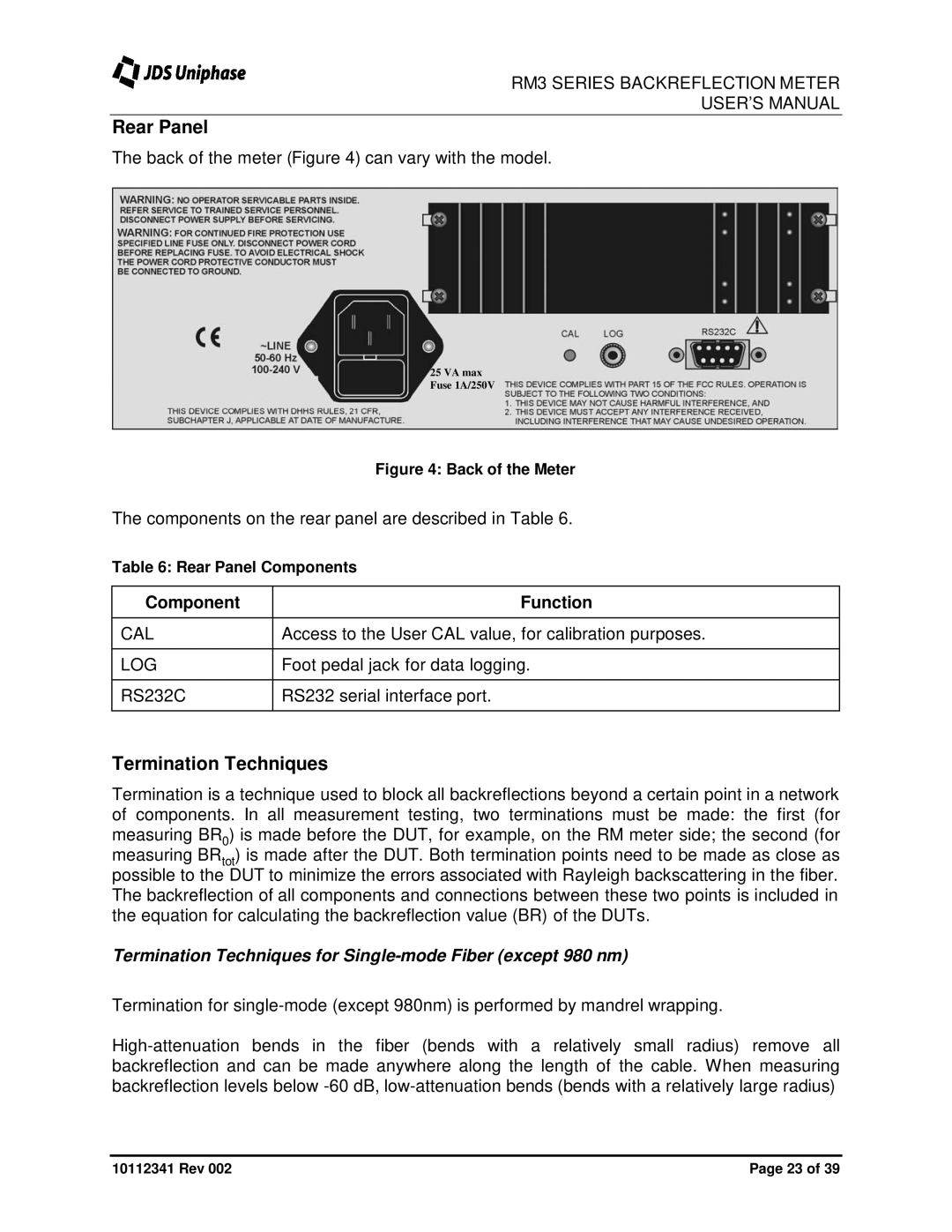RM3750 specifications
The JDS Uniphase RM3750 is a cutting-edge optical spectrum analyzer that has garnered attention in various telecommunications and photonics applications. Renowned for its versatility and accuracy, the RM3750 combines advanced technologies to provide users with unprecedented measurement capabilities, making it an essential tool for researchers and engineers working in fiber optics, laser development, and spectral analysis.One of the standout features of the RM3750 is its wide dynamic range. This feature allows users to obtain precise measurements across a broad spectrum of optical signals, which is crucial in environments where signal strength can vary significantly. The analyzer is designed to handle both high-intensity signals and weak optical events, ensuring that no detail is missed during analysis.
The RM3750 incorporates a high-resolution detection mechanism that enables it to distinguish closely spaced wavelengths. This characteristic is particularly beneficial in applications where wavelength spacing is minimal, such as in dense wavelength division multiplexing (DWDM) systems. The high resolution also allows for accurate characterization of spectral features, including signal peaks and noise.
In addition to its impressive measurement capabilities, the RM3750 supports advanced analysis and real-time monitoring. Users can visualize spectral data through an intuitive graphical interface, which aids in the quick interpretation of results. The instrument is equipped with real-time data processing capabilities, allowing users to observe changes in optical signals as they occur, a critical feature for dynamic environments like live signal monitoring.
The JDS Uniphase RM3750 is not only about hardware; it also comes with an array of software tools designed to enhance functionality and ease of use. These tools allow for automated measurements, data logging, and integration with other laboratory instruments. Moreover, the ability to export data in various formats facilitates easy sharing and analysis across platforms.
Another notable characteristic of the RM3750 is its compact design and robust build quality. This ensures that it can operate effectively in demanding laboratory conditions while being portable enough for field applications.
In conclusion, the JDS Uniphase RM3750 optical spectrum analyzer stands out for its combinations of wide dynamic range, high resolution, real-time monitoring, and user-friendly software integration. These characteristics make it an exceptional tool for professionals in telecommunications and optical research, enabling them to conduct more accurate and insightful measurements.

